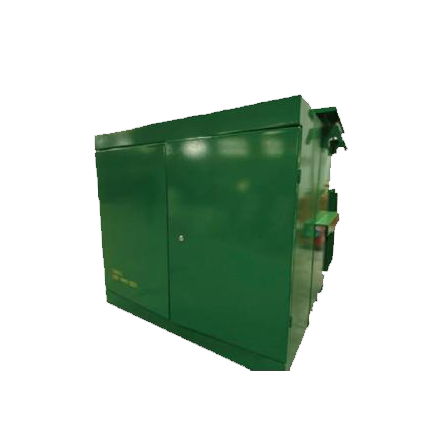Beyond the Canvas: Exploring the Versatile Uses of Graphite in Sketching
4 min readGraphite, a material primarily associated with pencils, holds a pivotal role in the art of sketching. Its unique physical properties and the wide range of available grades make it indispensable for artists seeking precision, texture, and tonal variation in their work. This article delves into the myriad ways graphite is utilized in sketching, examining its properties, the various types of graphite, and its impact on artistic techniques and outcomes.
The Nature of Graphite in Art
Graphite is a form of carbon characterized by its layered atomic structure, which imparts distinctive qualities essential for artistic endeavors. Understanding these properties helps to appreciate why graphite is so effective in sketching:
- Layered Structure: Graphite consists of layers of carbon atoms arranged in a hexagonal lattice. This structure allows graphite to be easily applied to surfaces and to be smudged or blended to achieve various effects. The weak Van der Waals forces between the layers enable graphite to leave marks on paper while allowing for easy manipulation.
- Varied Hardness: Graphite comes in a range of hardness grades, from very soft (B grades) to very hard (H grades). This range allows artists to achieve a spectrum of shades and textures, from deep, rich blacks to light, delicate greys. Types of Graphite and Their Artistic Applications
- Graphite Pencils:
- B Pencils: These pencils contain softer graphite and are graded from B to 9B. The softer the pencil, the more graphite is present, which results in darker marks. B pencils are ideal for creating rich, deep lines and for shading, making them suitable for expressive, dynamic sketches.
- H Pencils: Harder pencils, graded from H to 9H, contain less graphite and more clay. They produce lighter, finer lines and are used for detailed work and fine lines. H pencils are preferred for precision tasks and for creating delicate details.
- Combination Pencils: Many artists use a combination of B and H pencils to take advantage of the varying degrees of hardness. This allows for a broader range of tones and textures within a single sketch.
- Graphite Sticks and Pans:
- Graphite Sticks: These are pure graphite sticks that provide a different application experience compared to pencils. They can be used to cover large areas quickly and to create expressive, broad strokes. Graphite sticks are excellent for sketching backgrounds and for creating dynamic, textured effects.
- Graphite Pans: Similar to watercolor pans, graphite pans are blocks of compressed graphite that artists can use with water to create various effects. This medium allows for both dry and wet techniques, expanding the possibilities for texture and shading.
- Mechanical Pencils:
- Precision and Consistency: Mechanical pencils offer a consistent line width and eliminate the need for sharpening. They are ideal for detailed and precise work, making them a preferred choice for technical drawings and intricate sketches. Techniques and Applications in Sketching
- Shading and Tonal Variation:
- Blending: Graphite’s ability to blend smoothly is a crucial aspect of shading. Artists use blending tools such as tortillons or their fingers to create gradients and transitions between light and dark areas. This technique helps to achieve realistic and three-dimensional effects.
- Cross-Hatching and Stippling: These techniques involve layering lines or dots to build up texture and tonal variation. Soft graphite is ideal for achieving smooth, continuous lines in cross-hatching, while harder grades can create finer stippling effects.
- Textural Effects:
- Texture Creation: Graphite’s versatility allows artists to experiment with various textures. For instance, using a rougher surface or varying the pressure applied can create different textures that contribute to the overall feel of the sketch.
- Layering: Artists often layer different grades of graphite to build up complex textures and details. By using soft pencils for darker areas and hard pencils for finer details, they can create depth and dimension.
- Detail and Precision:
- Fine Lines and Detail Work: Harder graphite grades are used to produce crisp, fine lines that are essential for detailed sketches. This precision is particularly valuable in architectural drawings, technical sketches, and detailed portraits.
- Highlighting: Artists use erasers, especially kneaded erasers, to lift graphite and create highlights. This technique allows for the manipulation of light and shadow, enhancing the depth and realism of the sketch. Graphite’s Role in Artistic Styles
- Realism and Portraiture:
- Subtle Gradients: In realistic drawing and portraiture, graphite’s ability to create subtle gradients and detailed textures is crucial. Artists rely on a range of graphite grades to achieve lifelike shading and fine details that capture the nuances of light and texture.
- Abstract and Expressionist Art:
- Dynamic Marks: For abstract and expressionist art, graphite’s ability to produce a variety of marks—from bold, dark strokes to soft, delicate lines—allows for creative freedom. Artists use graphite to explore texture, contrast, and form in dynamic and expressive ways. Environmental and Practical Considerations
- Paper Selection: The choice of paper significantly impacts the application of graphite. Different textures and weights of paper affect how graphite adheres and blends. Artists often experiment with various types of paper to find the best surface for their techniques.
- Sustainability: As awareness of environmental issues grows, many artists seek sustainably sourced graphite and eco-friendly art supplies. Brands offering environmentally conscious products help reduce the ecological impact of art materials. Conclusion
Graphite’s diverse applications in sketching highlight its unparalleled versatility and importance in the art world. From the different types of pencils to the techniques employed, graphite allows artists to achieve a wide range of effects and styles. Understanding the properties and applications of graphite enhances an artist’s ability to create compelling and nuanced sketches. Whether used for detailed portraiture, expressive abstract work, or technical drawings, graphite remains a fundamental tool in the artistic process, embodying both tradition and innovation in the realm of sketching.

